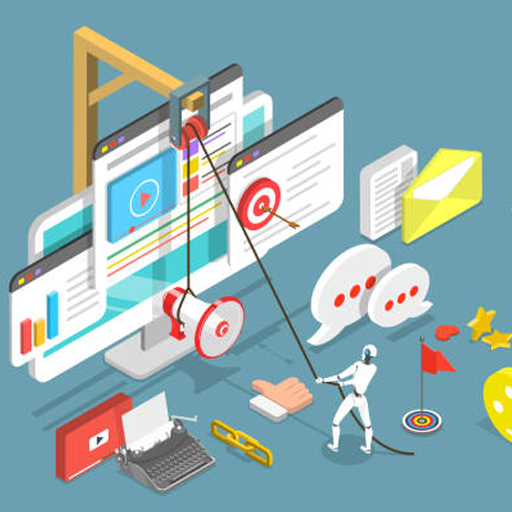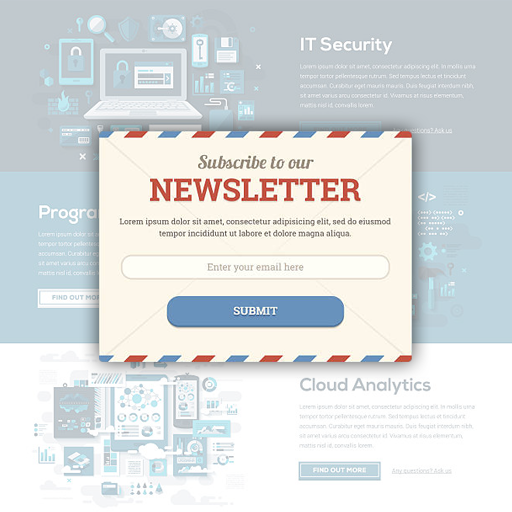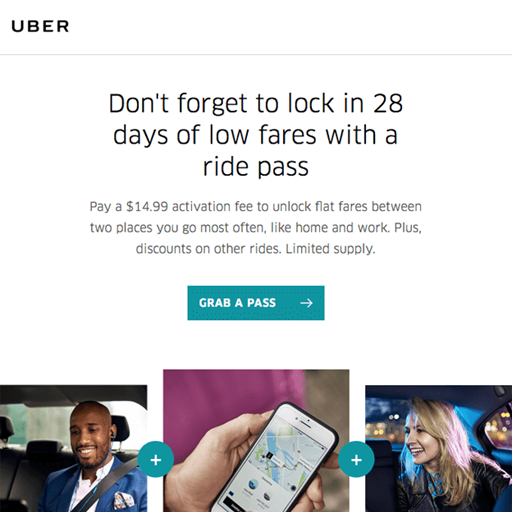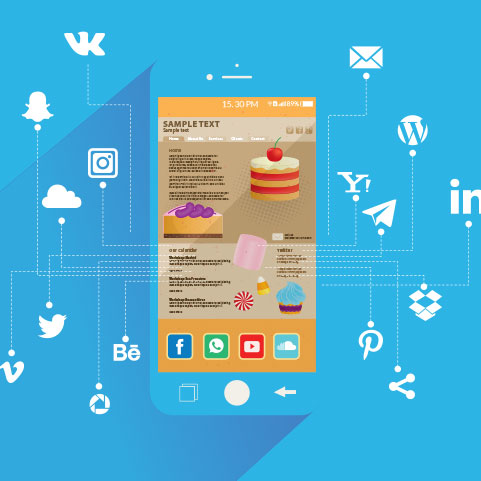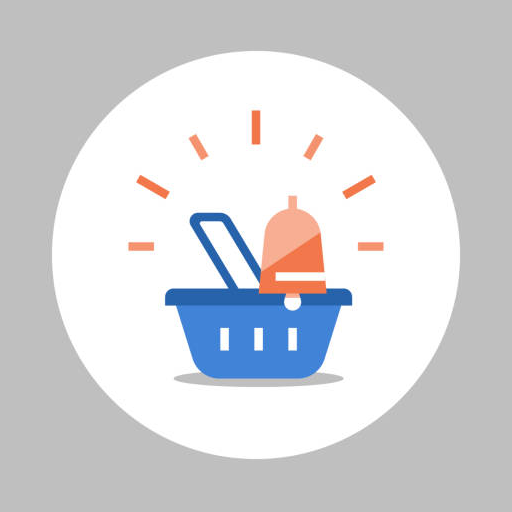Everything You Need to Know About Marketing Automation
Marketing automation allows businesses to automate their daily marketing tasks, both occasional and repetitive. Typical marketing automation software enables users to generate more leads, drive more sales, and optimize your ROI.
It also helps users target specific clients with personalized dialogue - so they receive messages they want, not the ones you think they want. With the right guidance, you can utilize marketing automation platforms to leverage one-on-one communication to yield productive results, whether you have a small or large customer base.
This guide will help you convert a few spectators into a stadium of loyal customers who will listen to everything you have to say.
What are the Benefits of Marketing Automation?
Marketing automation ultimately changes the way organizations market their brand to their leads. Generally, marketing automation software provides a wide variety of features to help you generate more leads, nurture them, and guide them down your sales funnel.
With the correct approach, you can significantly increase your conversion rate, brand awareness, and customer loyalty. In addition, marketing automation software is designed to align with your custom marketing strategy, giving you the ability to assess your campaign’s ROI for you to better optimize your marketing spend.
With marketing automation software, you can:
- Keep track of leads and engage them throughout the buyer’s journey.
- Nurture leads with personalized web content and emails.
- Create dynamic landing pages that will convert visitors to leads.
- Integrate with numerous third-party platforms or connect to new software.
- Churn social media interactions into conversions that generate sales
- Collect current analytics to gauge end-to-end ROI.
Since marketing automation software is built to maximize ROI, it effectively takes the guesswork out of figuring out which strategies are generating conversions. Once the correct strategy is implemented, it can provide results within a matter of weeks.
What are the Benefits for My Entire Organization?
Marketing automation provides a wide array of insights and tools to optimize the productivity of your business.
- Your sales team converts more leads in less time by focusing on quality leads that are driven to purchase your products or services.
- Your marketing team can devote its time on more important tasks that can’t be automated such as campaign development, competitor analysis, and content creation.
In this guide, you’ll learn all about the critical benefits of marketing automation so you can develop your world-beater strategy.
Mastering the Basics
When it comes to configuring your marketing automation software, successful implementation can be compared to winning a competition. While it may not be a simple journey, it requires commitment and time. However, there isn’t another feeling like hoisting the trophy at the end of a hard-fought competition.
Rightfully so, marketing automation can be viewed in the same sense. It’s up to you to put in the necessary commitment and time to ensure that your campaign lives up to its potential. Once your campaign is configured, you’ll receive access to important data on your leads and put yourself in the position to convert new customers faster than ever.
All of this is paramount to solidifying your spot on top of your industry’s fiercest competitors.
Contacts & Leads
Marketing automation allows users to keep track of their contacts and leads with ease, so you can focus on making your sales funnel for efficient. Just like any typical CRM, marketing automation software can take care of simple requirements such as a prospect’s company name, address, name, email address, telephone number, etc.
Nonetheless, marketing automation goes beyond just identifying your prospects. You can use marketing automation to analyze behavioral trends and actionable insights so you can engage your leads in a more personalized manner.
Lists & Segmentation
With marketing automation software, you can group prospects together based on their demographics, interest, or state of progress in the buyer’s journey. As your prospects begin to interact with your brand, you can keep track of their behavior and create lists for them based on their preferences.
Ideally, your lists should be specific in order for you to craft hyper-personalized messages. Marketing automation platforms will enable you to connect your forms, website activity, and email data so your lists are updated whenever they commit an action.
As soon as one of your prospects perform a specific behavior, such as clicking a link you sent in an email, the platform will automatically add them to a list of prospects that have done the same thing.
Form-Based Lists
One of the easiest ways to begin segmenting your list of leads is by their contact information. Develop specific lists that are automatically updated when a prospect meets the defined criteria, removing and adding prospects based on the data you receive about their recent activity.
Forms are often the best place to gather basic information about a prospect. They can tell you what product or service the prospect wants, where they are based, how they heard about you, etc.
With this much insight, you can conveniently segment your list of leads into granular lists for more effective targeting and personalization.
Behavioral Lists
While form-based lists are developed solely using contact information, behavioral lists are built from a prospect’s specific interactions with your brand.
Here are some triggers for a behavioral list:
- Clicking a link in an email
- Visiting ABC webpage
- Visiting ABC webpage but not XYZ page
The major benefit of a behavioral list is that you are able to transform a targeted list to a hyper-targeted list. If you can make these personal communications with your prospects even more personal, you’ll be doing yourself a favor by increasing your conversion rates and engagements.
Triggers & Filters
You’ve just learned about how you can segment your leads by their contact information and behavior. Now let’s observe how you can use triggers and filters to refine your lists further. Triggers kickstart a workflow, and filters target and segment leads based on their specific interests and actions.
For example, if you want to follow up with prospects who have received an email but didn’t open the link inside, then you would create a list called “has opened email and click on link” and set an automation to send a follow-up email to that list.
Workflows
In order to increase your conversions, it’s important to set up workflows to strategically nurture leads down your sales funnel. A workflow is a series of automation actions that happen based on a prospect’s actions and behaviors.
For example, consider an online basketball apparel store that offers student discounts. If a lead identifies as a college-aged person and enters his/her university’s name when signing up for an account, this action will automatically trigger a workflow that sends an email with discounts and coupons to that customer based on their school’s team.
Workflows are an integral component of any marketing automation software, allowing users to analyze a lead while they navigate through the buyer’s journey, from when they sign up for your email list to conversion.
The Most Effective Marketing Automation Tips
Now that you know about the basics of marketing automation, it’s time for you to understand how you can use your knowledge to formulate an infallible marketing automation strategy.
Prioritizing Quality Leads
Your leads are everything to your marketing strategy. Therefore, evaluating them should be the first thing you do before you begin the nurturing process. Having a list of leads with even just a few uninterested ones can jeopardize your conversion rate’s efficiency.
You can use marketing automation to receive updates whenever a particular lead isn’t opening your emails. If this behavior continues, you can remove this lead from your email list and focus on quality leads.
Using Email Behavior Tracking
Marketing automation and email marketing software aren’t the same. However, the former goes beyond the capabilities of standard email marketing software. Traditional marketing automation software can provide you with complete information about a lead when they first interact with you.
This way, you can track your leads when they visit a specific web page, fill out a form, or download an ebook. The best way to utilize email behavior tracking is to gauge the specific interests of your lead base.
Ultimately, you should understand the motivations of each and every lead you receive. Marketing automation makes this possible and takes out all of the guesswork, so here’s how you can better understand your leads by tracking their behavior:
- Take note if a lead visits a specific page on your website. Don’t be afraid to create a list for that lead even if they are the only one with that particular interest.
- Communicate with individual leads. Ask if you can assist them or make sure that you provide the products and services they are looking for.
- Create dynamic email content that resonates with your lead’s interests. For example, if you have noticed that your prospect doesn’t always respond to your emails, inform them that you’re aware of their busy schedule and have the means to talk to them on their terms.
Leveraging Social Media Management
Many businesses often steer away from social media automation platforms, primarily because most of these platforms only give users the option of automating posts. Social media management is much more than this.
With marketing automation, you can stay on top of your social media platforms without feeling disengaged. To do so, try filtering your conversations by keywords, hashtags, and more to find out what others are saying about your competitors, brand, and industry.
Keeping an active ear on these conversations will give you a greater idea of how you identify brand associates and hot new prospects.
Implement Lead-Based Scoring
Lead-based scoring is a critical component that allows users to determine the likelihood of a prospect becoming a paying customer. Marketing automation lets you track the behaviors of leads, but every lead is not the same. Try scoring each lead you receive to figure out the cost of converting them into a customer.
For example, you can score a new lead who visits your website at 30 points. However, you can score a lead that signs up for your demo at 120 points. Marketing automation is all about personalization. Therefore, score your leads accordingly in order to relay their significance to your sales and marketing teams so you can close more deals.
Use Shopping Cart Abandonment Campaigns
Every e-commerce retailer should be cognizant of the fact that every lead isn’t going to buy the first time they visit your website. Surprisingly, they may place a few items on their cart and leave your website. This doesn’t always mean that they have changed their mind, but it’s important to check up on disengaged leads.
Set up a shopping cart abandonment campaign to get a second chance to convert leads who leave your website. A typical campaign will trigger anytime a lead with a full shopping cart attempts to leave your site, asking for their contact information so you can contact them again in the future.
This is only the first step in making your campaign successful. With marketing automation, you can see what items a lead has left behind on their shopping cart. With this information, you can craft a personal email to inform them if their selected item dropped in price or if a special deal is taking place.
It also couldn’t hurt to send an automatic email to follow-up with these leads to see why they left your site. This way, you can create a custom list for these leads and send a personalized email that relates to them in the future.
Marketing Automation FAQs
Do you still have any questions about marketing automation? Refer to these FAQs to receive some answers to the most frequently asked questions marketers and business leaders have about marketing automation.
Q. How is marketing automation different than CRM?
A. Marketing automation and CRM aren’t the same, but these tools complement each other well. CRM software is typically designed for sales purposes, while marketing automation is for marketers. Particularly, marketing automation software is more comprehensive than CRM, but businesses should use both platforms to achieve success with their marketing strategy.
Q. Does marketing automation software provide API support?
A. Yes, but not all of them do. Be completely sure your preferred marketing automation platform provides this feature before you subscribe. Without technical backing, it can be difficult to expand your software as your business grows.
Q. Can I automate my social media outreach?
A. Yes, but you can achieve far more results if you simply enhance your social presence. Instead of looking for simple automation, check to see if your preferred platform has useful features such as auto engagements, social calendars, and RSS feed auto updates.
Q. Does marketing automation software come with analytics integration?
A. Yes. The backbone of any marketing strategy is analytics. No matter what platform you use for analytics, you should be able to integrate it into your marketing automation software.
Q. Does marketing automation software provide weekly or monthly reports?
A. This is completely up to you. When you configure your software, you can choose whether you want weekly or monthly reports to optimize your marketing spend.
Q. How can I choose the best marketing automation platform for my long-term growth?
A. The answer to this question is actually simpler than what you think. Select a marketing automation platform that is going to grow with you. To do so, look for marketing automation platforms that provide constant updates to their software. Chances are, these platforms are best suited for your long-term growth.
Q. Why do many businesses fail at marketing automation?
A. This answer is tough, but many businesses make the mistake of believing that marketing automation software is their end-all-be-all solution when it isn’t the case. Marketing automation software is meant to be the extension of a marketing strategy, not the entire marketing strategy. No matter how much money you spend on marketing automation software, you’ll fail if you rely too much on it and not enough on your own strategy.
Q. How important is team communication when it comes to marketing automation?
A. Communication is vital to the success of marketing automation. The lack of communication between sales and marketing teams can hinder your company’s conversion rates and ultimately reduce sales. Fortunately, marketing automation makes it easier for all participants to communicate with each other by providing updates when a lead is making a move and so much more.
Q. How much does marketing automation software cost?
A. Prices for marketing automation software can differ significantly, but you can expect to pay between $800 to $3,000. Fortunately, you can always find a cost-effective alternative whether you’re a larger company seeking to stay in budget or if you’re a small business with limited resources.
Ready to get started with our automation platform? Visit our pricing page
